

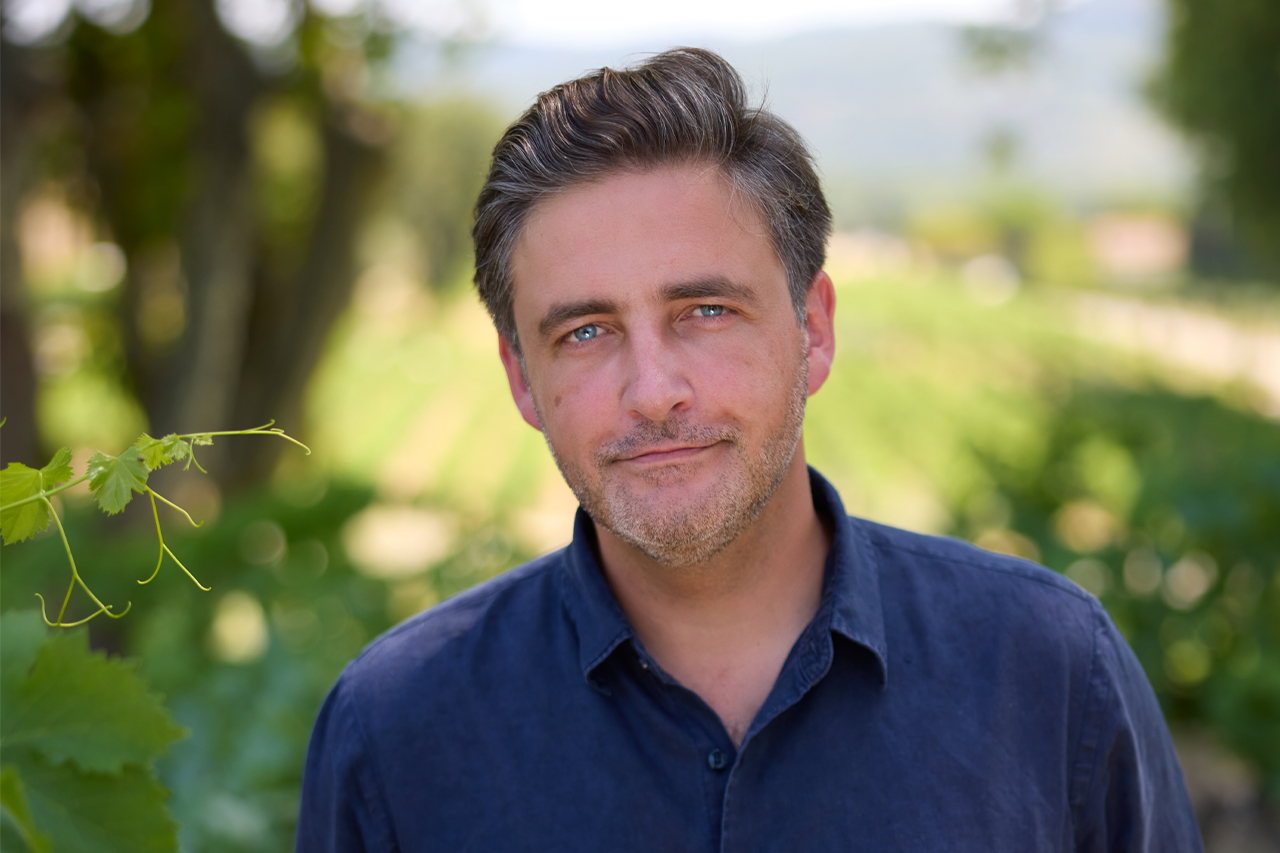
Q: How was this vintage for you? We’ve heard a lot from producers in Loire Valley and Benoît Droin in Chablis, so we know it was terrible up north. But, I think many people don’t realize that terrible Spring frosts also struck the Rhône.
Fred Chaudière: At Château Pesquié, we’re off 40%. It is a tiny crop, which, which was unfortunately about what we thought would happen. In the Ventoux overall, it should land somewhere between a 20-30% reduction. So it’s historically low. So overall, there’s a vast discrepancy within our wine region. But the quality is very good at Pesquié, which I would also wait a little bit to assume is the case everywhere else. We’d be happy to have more grapes, but quality-wise, it’s a good vintage. The alcohol is a bit lower with great balance across the board. In general, it varies in the Rhône. In Cairanne or Plan de Dieu, they’re off by 30-50%, while in parts of the Côtes-du-Rhône on the right bank, it’s only minus 10%. So, you know, it’s going to be different vintages for different regions.
Q: What do you think accounts for this variation?
The frost was the central discriminating element. In the southern right bank of the Rhône, they didn’t have much frost at all. We had between -2ºC and -9ºC for like eight hours – extremely cold temperatures for an extremely long time.
Q: Technically, that’s not even a frost. That’s a freeze.
Yes. And so, so that was disastrous, and then it was followed by a few more “normal” nights of frost. Then we didn’t have a particularly hot summer, and it was quite dry. Fortunately, we had a few rain showers in September, which overall helped. While we had a dry, late spring in our area, it was pretty wet in the rest of France. So the other big problem in the Loire and Chablis was the extreme mildew pressure on the top of the frost. We had some issues with flowering, and the dry conditions meant we could recover some of the yields lost to the frost.
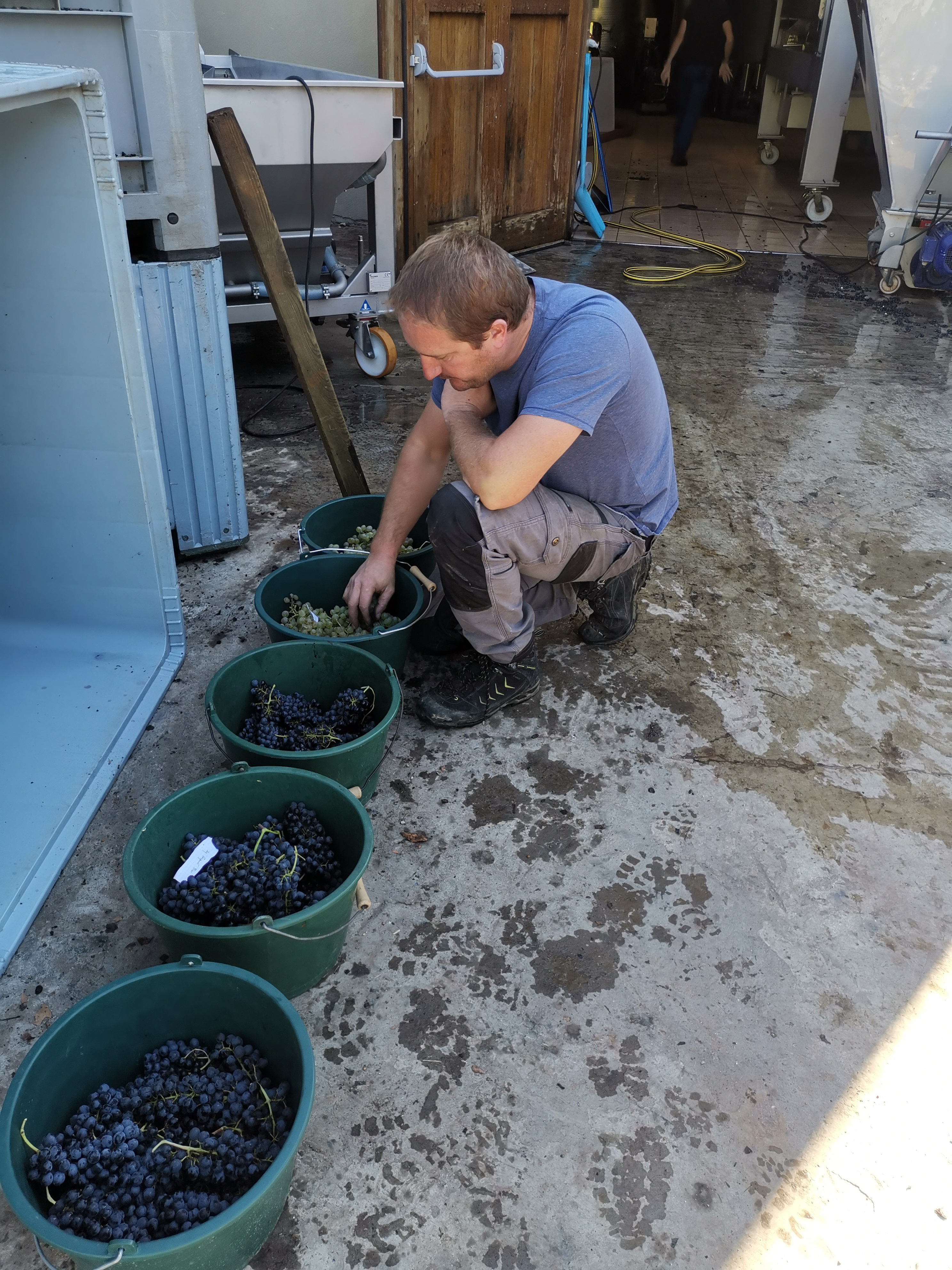 Q: Was it a later harvest than average?
Q: Was it a later harvest than average?
It’s a funny case for us. We started relatively early, around the 9th of September, and proceeded slowly, due to the delayed maturity, but then with the rains that began on the 3rd of October, we had to harvest extremely fast. So we started late, but we’ve never finished this early, which means that it’s the quickest harvest we’ve ever done.
Q: So with a small crop and a long, cool growing season, you have concentration with lower alcohol?
Yeah. With the small crop, maturity wasn’t an issue at all. But it was an issue for those who had a larger crop.
Q: Were there certain grape varieties that excelled in this vintage? Or was it more homogeneous?
We thought that Syrah had done better, but in the end, everything seemed equal. It was more a factor of how much frost they got. And ultimately, the late varieties like Clairette, Mourvèdre, and Cinsault got hit slightly less. But really, the frost made it very equal because it was so intense where we were. We had a few plots that produced a more normal crop. These were vines in the coldest parts of our property, which we hadn’t pruned before the frost. So we had maybe 10 hectares that had a relatively normal crop, just because we had waited to prune them in case that kind of catastrophe would happen. But, but overall, yeah, it’s small across the board. And you know, Clairette, Cinsault, Mourvèdre, or Carignan, we love these varieties, but they’re minimal in the grand scheme of what we do. So it doesn’t change the reality of the production.
This year, we also took over an extra 2 hectares of whites, mostly Grenache Blanc and Clairette. So overall, the production of whites has been less impacted than the production of reds, primarily thanks to these new vines and the later ripening Clairette. So we’re only down 25% for the Whites, we did a little less Rosé, so it’s mostly the Reds that were hardest hit production-wise this vintage.
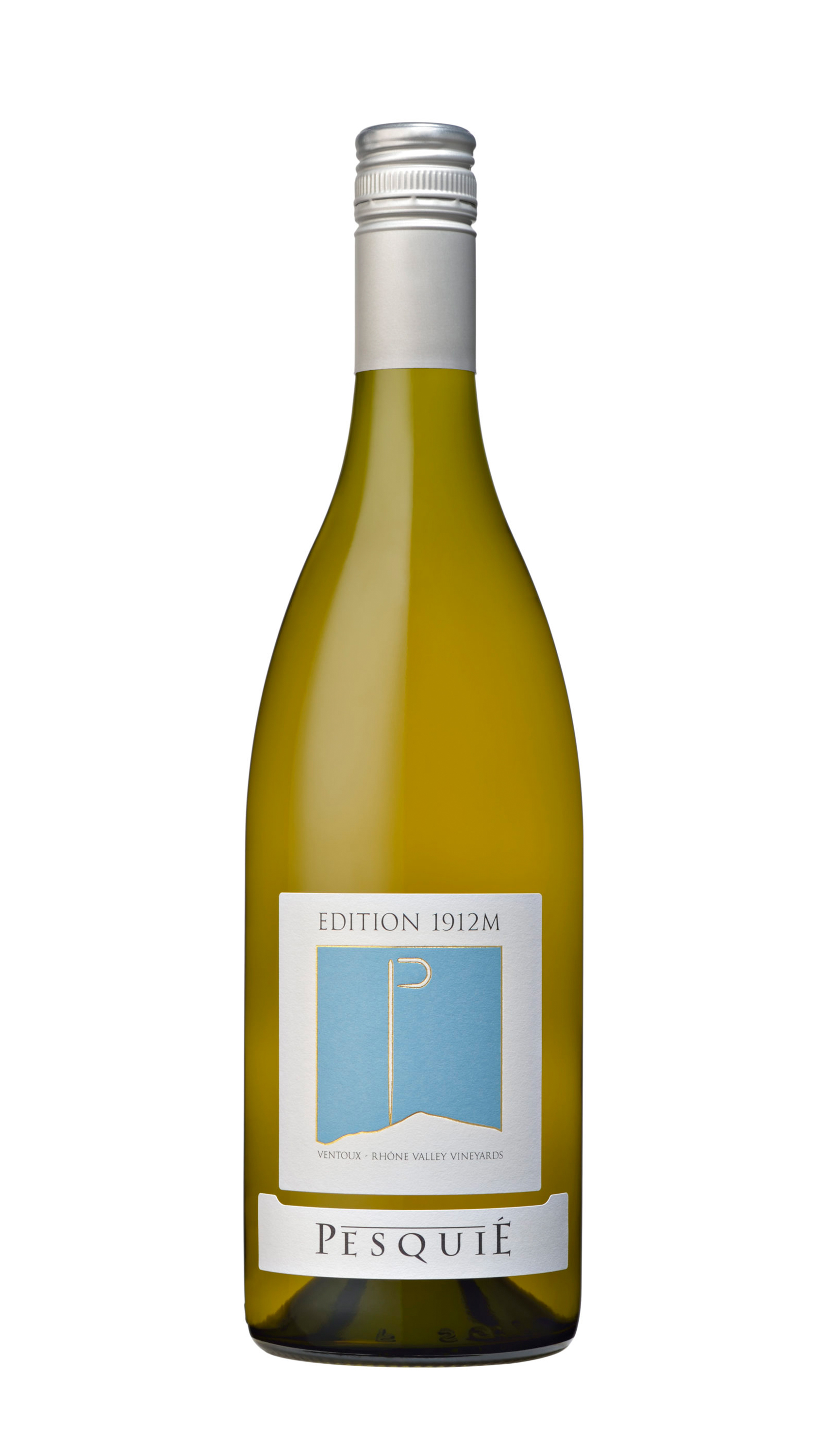
Q: Have you seen increasing demand for white wines from your property?
Yes, and it will be even crazier next year because there is much less white wine made in the whole Rhône this vintage.
We are adding two new white wines from you in 2022. The 1912m Blanc and a Rolle from Paradou, how will the vintage impact these new additions?
We’ve been slowly building Paradou’s Provencale identity. In the same way, we’ve added the Cinsault Rouge, we’ve wanted to include a Rolle to root Paradou more in that Provencal universe. So we’re hoping to bottle the Paradou Rolle in January. There’s going to be a little bit less white wine than we anticipated, so we want to make sure you have a good supply of Les Terrasses Blanc in addition to the 1912m Blanc and Paradou Rolle.
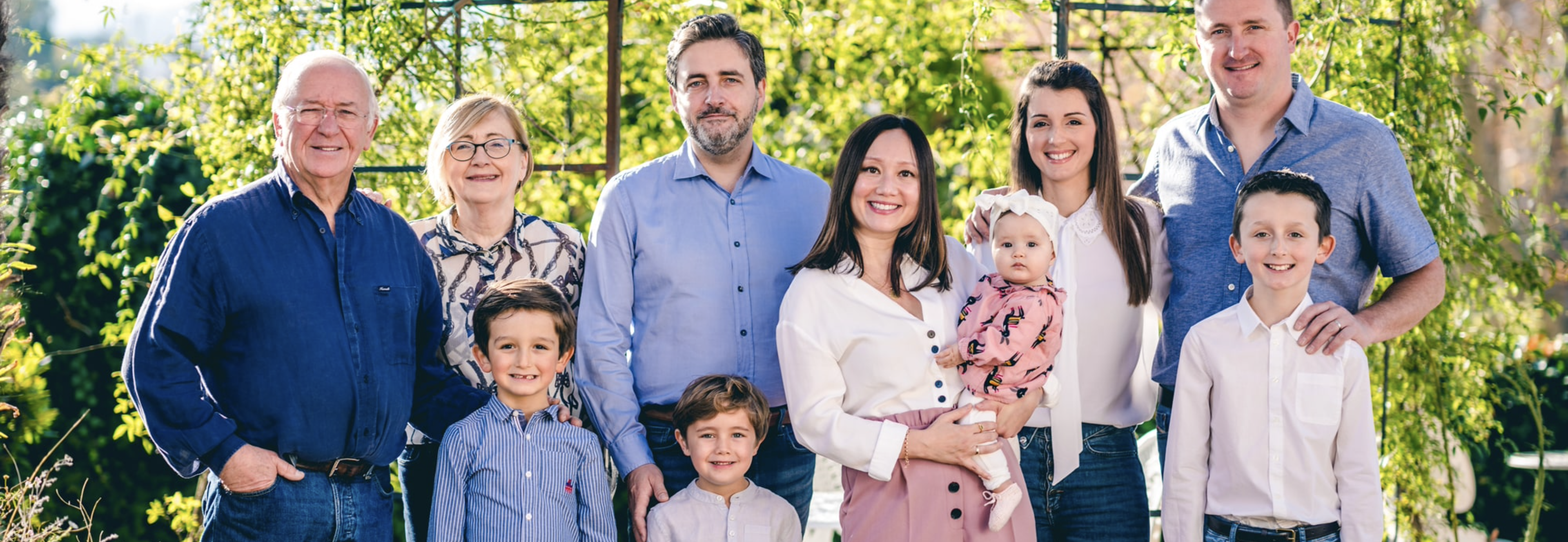
Famille Chaudière
I feel like I’ve not done a good job defining Paradou for the US. How would you describe Paradou, especially alongside Château Pesquié?
Château Pesquié is about three generations of my family, the history, the mountain, the Ventoux, the Rhône Valley, freshness, altitude, and now organic and biodynamic. I would say Château Pesquié is rooted in AOC Ventoux and shares its story. For Paradou, we are trying to evoke the sensory impressions of a Provencal-rooted lifestyle with the Côtes du Provence Rosé and a tiny production of AOC Provence olive oil. So we have these two official Provence AOC products at the top of the range. Also, Paradou is about my generation, me and my brother Alex and our wives Kristen and Amandine. We’re all part of the Paradou story. It is about how we live our lives in Provence and how these friendly wines can take you on a tour throughout Provence. And finally, this is our way of revisiting the relationship we had with our grandparents. The fact that they spoke Provencal and Paradou is a Provencal word, of course, but also the food, the markets, the old villages, it’s more the Provence of the hinterland than the Côte d’Azur. To us, this is something more authentic than what you drink and eat in Cannes or Monaco.
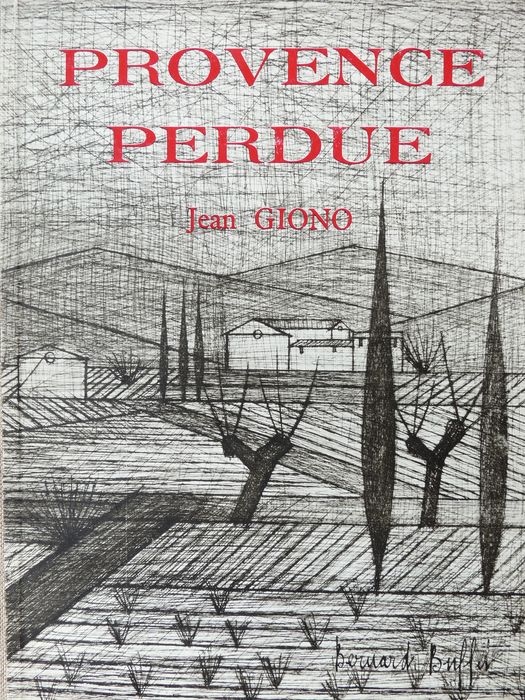
Your description reminds me of the French author Jean Giono who wrote about Provence’s backwoods and desolate places, which are very different from the coast.
Exactly. And we want to revisit that historical, authentic Provence and bring a touch of modernity to it. So the motto we want to use is refresco memori, which in Provencal means to refresh your memory, which is our way of evoking Provence’s history and reminding people who have read about or visited Provence of their memories or sense of the landscape. So we want to try to use more stories from Provencal literature, images of its terrain, food, and culture, and find why it is still meaningful and contemporary and why it should still talk to us.
Is Paradou a négoce project? Or are these vineyards that you’re leasing?
It still is a négoce project, but we are making two changes. First, we’re abandoning any sources that wouldn’t be in the Southern Rhône because otherwise, we couldn’t be IGP Méditerranée. We used to source Grenache from as far away as the Roussillon, and most of our Viognier was coming from the Cevennes. So we are slowly changing that. In this vintage, 80% of the sourcing is from Ventoux. Secondly, we want to move towards buying grapes rather than buying wine. Right now, 100% of the Cinsault Rouge and 100% of the Vermentino, and a large part of the Grenache is already made by us. Not yet for the Cinsault Rosé because in this vintage, it was impossible, and we couldn’t have done the Cinsault Rouge otherwise. Same for the Viognier in 2021. So we are building partnerships with young growers following strict parameters to ensure that we control the winemaking.
Finally, for the 2022 vintage, we should see a large part of the range being in organic conversion. And by 2025 on the full range will be certified organic. So these are the important quality benchmarks we’re pursuing for Paradou. And this is paramount because finding good Grenache of Viognier is not hard, but finding Cinsault Rouge or 100% Cinsault Rosé or any 100% Vermentino is impossible. So we need to control the source and its quality.
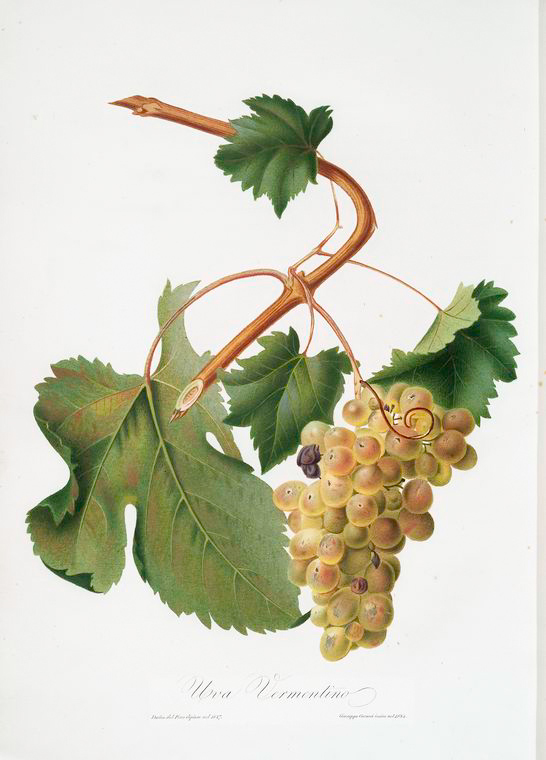 Let’s talk a bit about Rolle. I mean, who doesn’t love Vermentino? Still, it seems to be an unfairly underappreciated Mediterranean white grape variety. But for those who do not share our peculiar obsessions, why did you select Vermentino as a white varietal wine to represent Provence? What about this variety is so quintessentially Provence?
Let’s talk a bit about Rolle. I mean, who doesn’t love Vermentino? Still, it seems to be an unfairly underappreciated Mediterranean white grape variety. But for those who do not share our peculiar obsessions, why did you select Vermentino as a white varietal wine to represent Provence? What about this variety is so quintessentially Provence?
Vermentino is so established in Provence that it has a Provencal name here – Rolle. It is an essential addition to the rosés of Provence. For us, Rolle is the best and most defining white variety of Provence. And, of course, what we love about it echoes what we do at Château Pesquié and Paradou. It’s all about freshness, a vibrantly floral but elegant grape variety. In many ways, it reminds me of Viognier at Pesquié, which is also fresh and floral. So we had a great opportunity to partner with a grower that used to be one of our trainees at Pesquié 10 years ago, and when we saw the opportunity to work with 3 hectares of Vermentino, we were like, yep, yep! We want to do that. We had been waiting for a while to find the right Vermentino, to be honest. So, you know, 2021 wasn’t the easiest vintage to start with because it had been hit hard by the frost as well. But it’s still a start. So we’re very excited. And this is also a variety that we do not grow at Pesquié. So it’s another thing that is very different from what we already do.
Let’s move back to Château Pesquié. What differentiates Édition 1912m Blanc from Les Terrasses Blanc?
1912m is an homage to the altitude of Mont Ventoux, so we’ve always tried to make a slightly lighter and brighter style wine. There’s always a concentration to Terrasses that was defining for that range. And while there’s the freshness of the Ventoux in it, with 1912m Rouge, there’s a little bit more Cinsault, so it’s a slightly brighter and crisp red wine. And it will be the same for the white. The 1912m Blanc has more Clairette and Grenache than the Terrasses which still has Grenache and Clairette but also has about 30% Viognier. There’s no Viognier in the Édition 1912m. So in 2021, we’ll probably end up having about 85 to 90% Grenache and Clairette, perhaps about half of each, and 10% of Roussanne, whereas the blend of Terrasses Blanc is more like 30%, Viognier 30% Grenache Blanc, 30% Clairette, and 10% Roussanne.
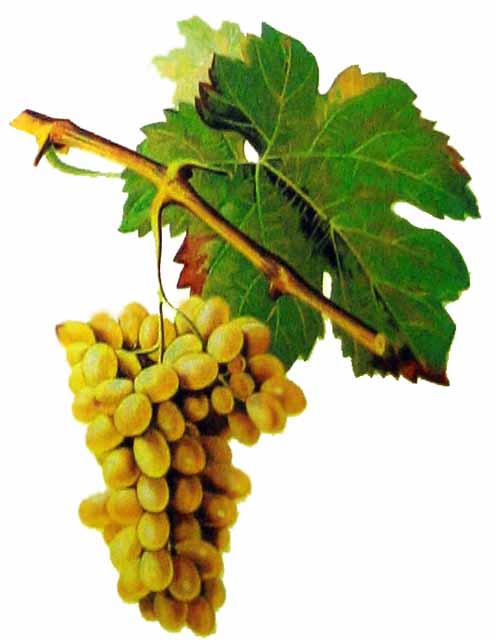 I recall being in the Rhône about ten years ago, and everyone was talking about Clairette. At that point, people were looking for it, and many were planting it or restoring it in their vineyards. Clairette was seen as a white variety that had been overlooked despite the potential for making elegant and refined wines with moderate alcohol. You have also been seeking out and planting Clairette, so I’d like to talk about how cuvée Juliette came about and your new appreciation for Clairette.
I recall being in the Rhône about ten years ago, and everyone was talking about Clairette. At that point, people were looking for it, and many were planting it or restoring it in their vineyards. Clairette was seen as a white variety that had been overlooked despite the potential for making elegant and refined wines with moderate alcohol. You have also been seeking out and planting Clairette, so I’d like to talk about how cuvée Juliette came about and your new appreciation for Clairette.
Well, you’ve already said most of it. It’s funny; I was discussing Clairette this morning with another winemaker who called it the Chardonnay of the Rhône. And he was, of course, referring to Burgundy. And indeed, I think Clairette is probably the most characteristic white variety for the southern Rhône and one that has the most potential in terms of freshness and elegance. And being a late-ripening variety, the greatest future in the face of climate change – even if it has already been here forever. It can be a relatively vigorous grape, and it took time to understand this variety for many people, including us. Clairette has a remarkable ability to capture mineral saltiness. It’s not a variety that is very exuberant, but it’s very delicate and very refined. So around 2014 or 2015, Alex and I realized that we wanted to make a cuvée based on Clairette, but it took us three years to figure out how to do it right. The first vintage where we felt we had succeeded was 2018. We fermented a blend of 70% Clairette and 30% Grenache Blanc in concrete eggs and a couple of demi-muids. Then we created a blend of 90% egg and 10% demi-muid. We felt it was excellent, so we bottled it and put it aside, figuring we’d come up with a name later. In April 2020, my daughter was born, and we named her Juliette, and there’s my brother Alex and me, and Alex has two sons, and my oldest child is a boy… Finally, there’s a girl in the family, and it seemed that Cuvée Juliette was the perfect name for the wine that Alex and I made two years before the birth of my daughter. So in the end, we did find a way to capture how amazing a Clairette-dominated wine can show the complexity, freshness, saltiness, and minerality of the Ventoux’s limestone soils.
Are there any other projects you’re working on?
So we make wines before we have names for them, but presumably, at this stage, we’re pretty sure that we are about to launch a Quintessence Rosé. We’d done many experiments in 2020, and we’ve bottled a 2020 “Quintessence Rosé” about three weeks ago, and we will launch it in January. It’s a rosé that is 70% Mourvèdre, 20% Cinsault, and 10% Clairette and mostly aged in concrete eggs and 600L demi-muids like Cuvée Juliette.
We’ve thought for a while that we needed to create a gastronomical rosé and to be honest, the idea was whispered to us by the famous sommelier, Olivier Poussier. He is very influential in France, and he’s been following us much more in the last few years. We just had a great article in the Revue de Vin de France, thanks to him. He came to us and suggested we make a top rosé, and he was willing to participate in the selection and blending. So he’s very excited about this project. To be clear, we’re launching a 2020 vintage rosé in the winter of 2022, so this is not your usual Provençal-style rosé.
Isn’t that a blend that you’d typically find in Bandol with such a high percentage of Mourvèdre?
To be 100% honest with you, we were planning to use more Cinsault. We had done an extended maceration of Cinsault, but it ended up being metallic in taste. And so we decided to take it off the skins. Then we discovered that blended with Mourvèdre; it came back into balance. Is this what we’re going to do with the next vintages? I’m not sure yet. But we’ve been surprised in a very good way by the 2020. And to be honest, I think only five or six people have tasted this rosé so far. We feel very confident because Olivier Poussier says it’s great and there are only 2500 bottles of it, so it is very, very small.
Farming at Château Pesquié is mostly biodynamic at this point. Are you working with Biodyvin or Demeter?
Demeter.
We basically have the organic certification, the EU certification, but from what I understand, because of SO2 mostly, we can not use it in the US, so we are adding “wine made with organic grapes” to the labels. Oh, and another thing, which will also be the case on Paradou, we have a vegan certification for Paradou and Pesquié from the Vegan Society.
So, back to Demeter, we have validated our farming practices with them, and our last tranche of organic certifications was in 2018. So normally, you move from organic to biodynamic. So it takes three years to convert to organic, then it takes another three years of being organic to be able to be registered as biodynamic with Demeter. We are trying to avoid having some cuvées labeled Demeter-certified biodynamic and others not. So starting with the 2021 vintage, we will begin adding the Demeter logo to the back labels for Château Pesquié. But this all may be delayed because Demeter International and Demeter France are arguing about some changes in practices.